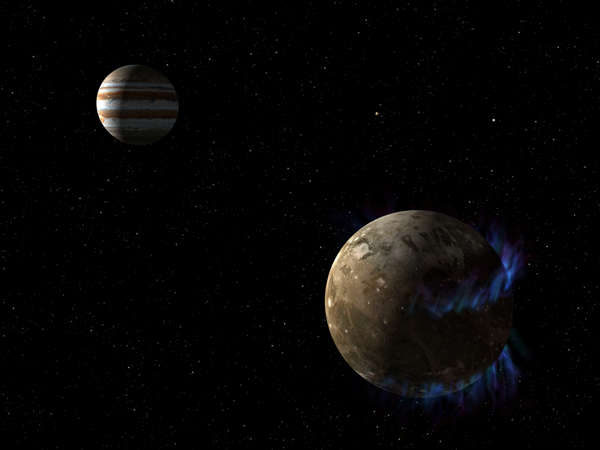Galileo-
On This Day in Space! Dec. 28, 2000: Galileo spacecraft sees auroras on Ganymede-Jupiter’s largest moon-
The following written content by Hanneke Weitering , Chelsea Gohd
On Dec. 28, 2000, NASA’s Galileo spacecraft discovered auroras on Ganymede, Jupiter’s largest moon.
The Galileo spacecraft launched in 1989 on a mission to study Jupiter and its moons. It also flew by Venus and Earth on its way there. The spacecraft flew by Ganymede several times while it was in orbit around Jupiter.
During this particular flyby, it was looking for auroras. Ganymede was in Jupiter’s shadow at the time, which made it easier for Galileo to see the faint auroras because there was no sunlight. So Galileo was in the right place at the right time, and it successfully spotted auroras on the moon.
The spacecraft has also made other incredible discoveries in Ganymede, like the fact that it has a magnetic field. No other moon was known to have a magnetic field at the time. Galileo even found evidence of a liquid saltwater ocean beneath the moon’s crust and a thin atmosphere. Read more from Space.





